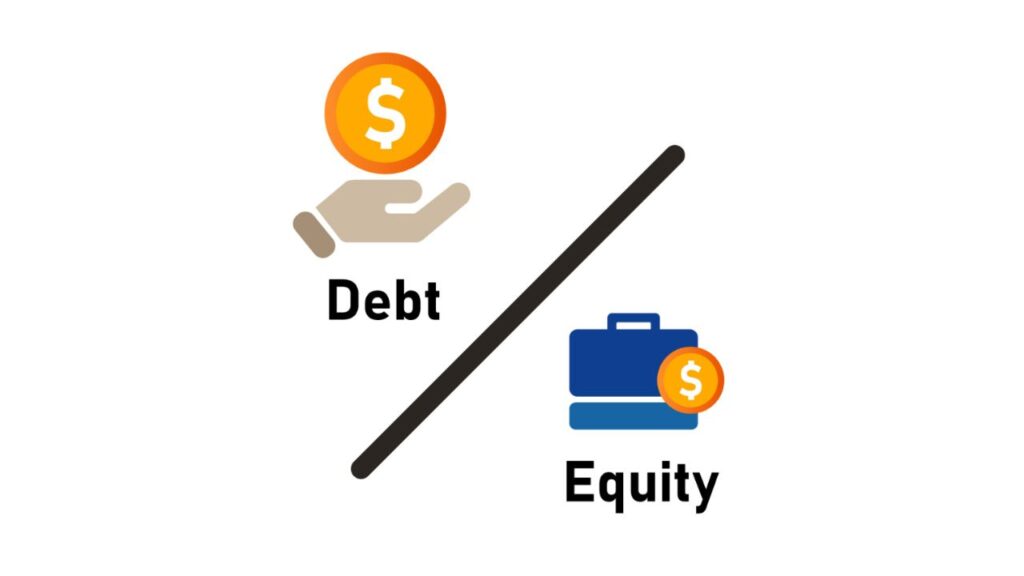When evaluating a company’s financial health, one of the most widely used metrics is the debt-to-equity (D/E) ratio. This ratio measures how much debt a company uses to finance its operations compared to the amount invested by shareholders.
Understanding the D/E ratio is crucial for investors, financial analysts, and business owners alike, as it provides insights into a company’s financial structure and risk profile.
What Is the Debt-to-Equity Ratio?
The debt to equity ratio is a leverage ratio that compares a company’s total liabilities to its shareholder equity. It shows the proportion of financing that comes from creditors versus owners.
Formula:
Debt-to-Equity Ratio=Total LiabilitiesShareholders’ Equity\text{Debt-to-Equity Ratio} = \frac{\text{Total Liabilities}}{\text{Shareholders’ Equity}}Debt-to-Equity Ratio=Shareholders’ EquityTotal Liabilities
Both components of the equation can be found on a company’s balance sheet:
- Total Liabilities include all of the company’s financial obligations, such as loans, bonds, and other forms of debt.
- Shareholders’ Equity represents the owners’ residual interest in the company after liabilities are subtracted from assets.
Example Calculation
Let’s say a company has:
- Total Liabilities: $500,000
- Shareholders’ Equity: $250,000
Using the formula:
D/E Ratio=500,000250,000=2.0\text{D/E Ratio} = \frac{500,000}{250,000} = 2.0D/E Ratio=250,000500,000=2.0
This means the company has $2 of debt for every $1 of equity.
How to Interpret the Debt-to-Equity Ratio
Interpreting the D/E ratio depends on the industry, business model, and context. However, some general guidelines apply:
1. High Debt-to-Equity Ratio
- What it means: The company is heavily financed by debt.
- Implications: While this may enhance returns during good times (due to leverage), it increases financial risk. A highly leveraged company may struggle to meet debt obligations if revenues decline.
2. Low Debt-to-Equity Ratio
- What it means: The company relies more on equity than debt to fund operations.
- Implications: This suggests a conservative financial structure and lower financial risk. However, it could also mean missed opportunities for growth if the company isn’t taking advantage of low-cost debt financing.
Industry Benchmarks Matter
The acceptable D/E ratio varies significantly across industries:
- Capital-intensive industries like utilities, telecommunications, and manufacturing typically have higher D/E ratios because they require large upfront investments.
- Tech companies and service-based businesses often have lower ratios due to lighter capital needs.
Always compare a company’s D/E ratio to peers within the same industry to draw meaningful conclusions.
Limitations of the Debt-to-Equity Ratio
While useful, the D/E ratio is not without its flaws:
- Accounting Variability: Shareholder equity can be affected by accounting policies, depreciation methods, and asset valuations.
- Not All Debt Is Equal: Some liabilities may be more burdensome than others (e.g., short-term vs. long-term debt).
- Doesn’t Show Cash Flow: A company might have a high D/E ratio but strong cash flows, making debt manageable.
It’s important to use the D/E ratio alongside other financial metrics like interest coverage ratio, current ratio, and return on equity to get a complete picture.
Final Thoughts
The debt-to-equity ratio is a vital tool in assessing a company’s capital structure and financial risk. By calculating this ratio, you gain insight into how a business balances its obligations and investments. But interpretation requires context—especially industry standards and the company’s overall financial strategy.
Whether you’re an investor gauging risk, a lender assessing creditworthiness, or a business owner monitoring your financial health, understanding the debt-to-equity ratio can help you make better-informed decisions.
For more posts, Click here

